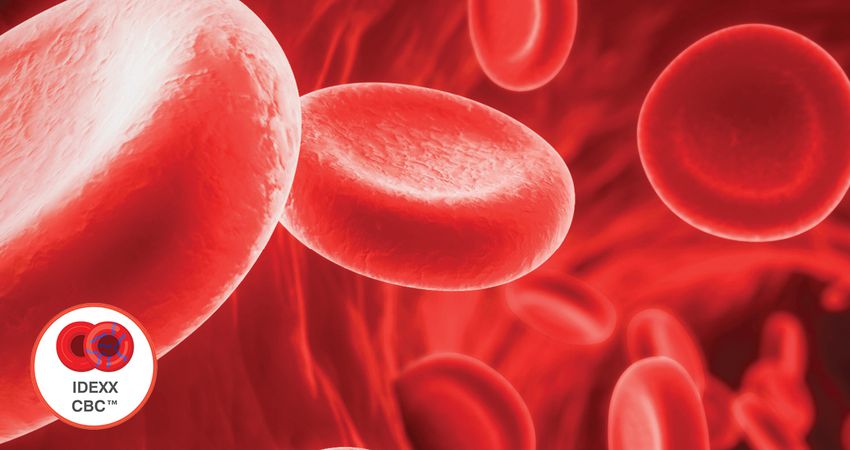IDEXX Newsletter
Not all CBCs are created equal
Haematology testing is an essential part of assessing the patients’ overall health, and can act like a ‘check engine light’ to flag the need for further investigation, particularly in pre-anaesthetic or preventive care settings.
This is why, IDEXX is proud to introduce the IDEXX CBC™. Designed to aid the diagnosis and differentiation of anaemias, as well as the detection of iron deficiencies for improved patient outcomes; the IDEXX CBC™ delivers the most advanced haemogram available, including a comprehensive automated CBC result with red cell indices, platelet indices, and a 5-part white cell differential.
PLUS, the IDEXX CBC™ enables a higher standard of care through the routine inclusion of an absolute Reticulocyte count and Reticulocyte-Haemoglobin (Retic-HGB) for all feline and canine CBCs.
How does the inclusion of this reticulocyte information in the IDEXX CBC affect your patient management?
The importance of an absolute reticulocyte count is how it can help classify anaemia as either regenerative or non-regenerative. Guiding the differential diagnosis and prompting the investigation of potential causes such as underlying haemorrhage, haemolysis, or a developing erythrocytosis, for example in the face of a cardiorespiratory disease with associated hypoxaemia.
Reticulocyte-haemoglobin (Retic-HGB) is a marker of iron availability for erythropoiesis. The detection of reduced iron availability in dogs and cats is problematic, with serum iron levels, iron profiles and red cell indices all having limitations. By contrast, canine reticulocytes are in circulation for two days while maturing and reflect the iron availability for haemoglobin synthesis within the previous 2-4 days. Therefore Retic-HGB provides a much earlier indication of iron deficiency as it reflects iron availability during a clinically relevant time frame.
The two most common aetiologies for a low Retic-HGB are true iron deficiency (most typically associated with chronic blood loss), or inflammation, where iron levels are adequate, but it is less available for erythropoiesis. Less common explanations are portosystemic shunts, and in some cases, it may be breed-related (e.g. Japanese Akitas and Shiba Inus).
How do you access the IDEXX CBCTM?
Download the algorithm below and pick the appropriate case management option for your patient.
Download Australian algorithm
Haematology Support Documents
To learn more about how you can achieve an IDEXX CBCTM result in real-time, please contact your local Diagnostic Practice Consultant or email IDEXX-ANZ-Sales@idexx.com
Make sure you also find out more and utlise our new resource IDEXX CBC centre here

